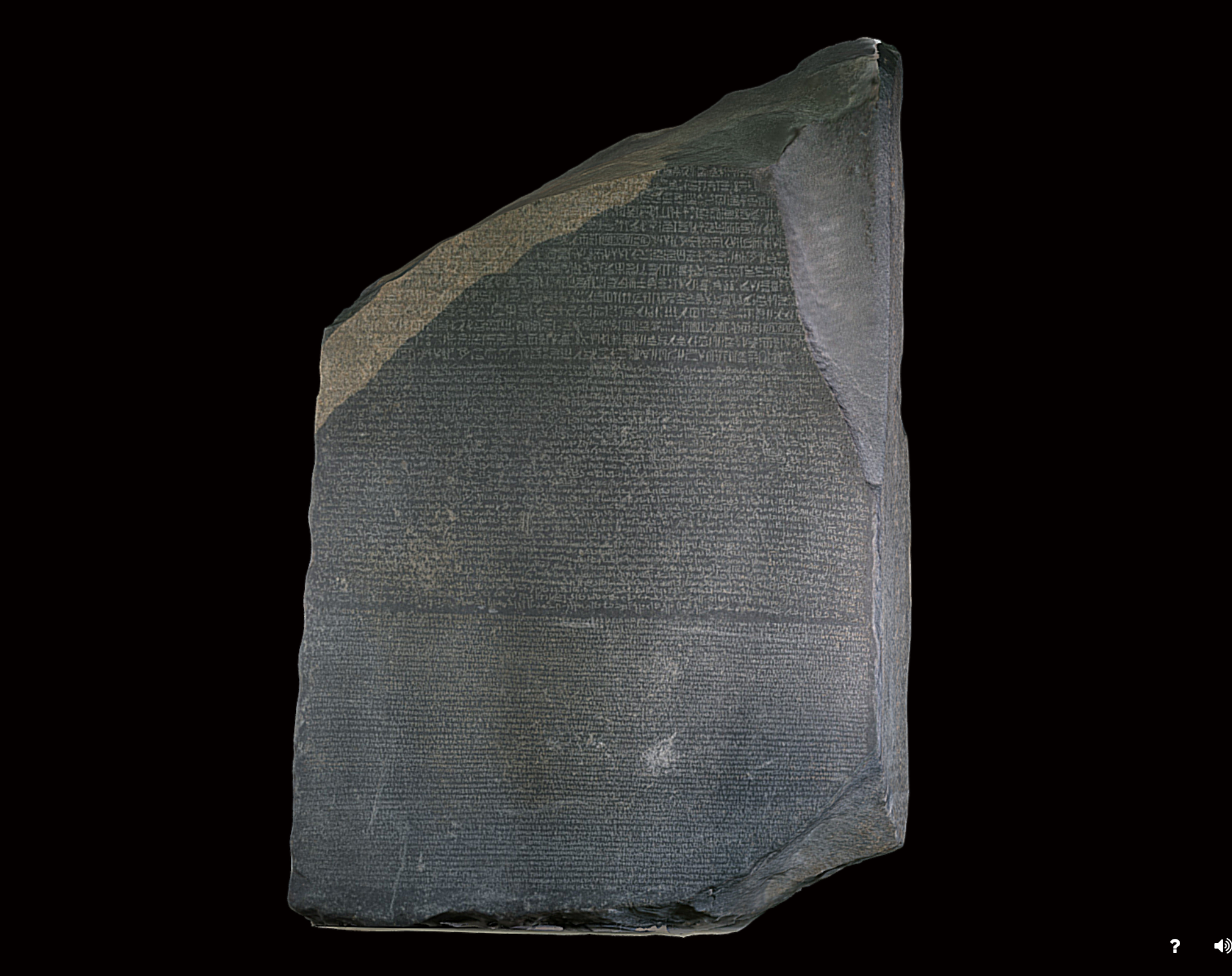
One of the world’s most important artifacts, the Rosetta Stone, is now available for download. Earlier this month, the British Museum uploaded the first 3-D scan of the famous carved document to Sketchfab, a platform to share 3-D and VR content online.
Now, users can get up close and personal with the Rosetta Stone on the site, rotating it 360 degrees and examining it from all angles.
“The use of 3-D is now making things possible that the 2-D representation cannot, it has the potential to augment and enhance the museum experience,” Daniel Pett, the museum’s senior digital humanities manager, who created the 3-D file, told artnet News in an email. He noted that 3-D models make it possible to create replicas of works that can be studied up close and provide new sensory information for visitors who are blind or vision-impaired.
The ancient stone slab, carved on granodiorite, isn’t notable for what it says—it’s a royal decree from King Ptolomy V (yawn)—but for the key role it played in the translation of ancient Egyptian hieroglyphics. The message is repeated three times, in hieroglyphics, ancient Egyptian Demotic script, and Ancient Greek.
It took some 20 years, but scholars were ultimately able to decipher the two lost languages, cracking the code to ancient Egyptian and earning the term Rosetta Stone a place in the contemporary lexicon as a way to refer to the key to new fields of knowledge.
The stone dates to 196 BC and was discovered in July 1799 by Napoleon’s army near the town of Rashid, or Rosetta. When the British defeated France in Egypt in 1801, the massive stela—45 inches tall and 28.5 inches wide—was sent to the British Museum, where it has been on near-continuous view since 1802.
“This scan was part of our larger attempt to capture as many of our iconic pieces from the collection—and indeed the unseen in store objects—and make them available for people to view in 3-D or in more tactile forms,” Pett told Digital Trends.
Rosetta Stone on view at the British Museum. Courtesy of the British Museum.
The British Museum has been uploading “downloadable collection” content to Sketchfab since 2014 and has created 3-D scans of over 200 objects to date. The Rosetta Stone is the most famous, most visited piece in the institution’s eight million-object strong collection, making it an especially important contribution to the site.
Sketchfab user Hrothgar was particularly impressed, writing, “y’all have been posting some epic pieces of history here, but I’ve been waiting for this one ever since I learned about this site. This is completely awesome.”
The 3-D scan is a composite based on 228 photographs taken with Nikon D5100, Sony A6000, and OnePlus3 mobile phone, but the museum had some difficulty putting it together.
“The glyphs are really shallow, many of the images are shot on macro level and we only had an hour to work on the capture,” Pett wrote on Sketchfab. “The back of the model is shot through the glass case, so it came out better than I thought it would.”